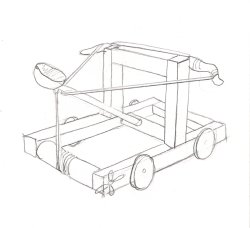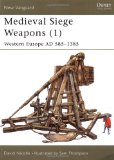 |
|||
 |
A Brief History of the CatapultWe typically think of a catapult as something that was used in the Middle Ages to destroy the walls of a castle. But catapults have a very long history dating long before the time of castles and they were developed and designed in many different ways by many different cultures over the centuries. What is a catapult? The general definition is that a catapult is a machine that stores energy then quickly releases this energy to fire a projectile. To be a "real" catapult the machine generally has to be too large for a person to carry. If we just used the storage and release of energy to define a catapult then a longbow would also fit this definition. So the size of the machine is important. How did catapults develop?
When did the first catapults appear and where? The earliest writings of catapults were that they originated in China around the 3rd and 4th Century BC and this type of early catapult was much like a big crossbow. They stood around 8 feet tall. True that these are catapults but the thing that makes a catapult into the machine we generally consider to be authentic is the development of the swinging arm. This is the arm that holds the bucket and projectile. Variations of Catapults The term "catapult" is used to define a very wide variety of large machines for hurling projectiles and some of the more common variations include the trebuchet, which is a catapult that uses gravity and a seesaw effect to hurl its projectile. Another variation is the ballista, which is similar to a crossbow and uses twisted skeins of material to create torsion as its way of storing energy for release. The End of Catapults With the invention and use of gunpowder and the subsequent creation of artillery the catapult became obsolete as the weapon of choice for warfare around the fourteenth century. Catapults have a long history and changed dramatically over many centuries. The true catapult that we think of today as a siege engine only saw limited use in the middle ages. Just as it was coming into its power as a machine of destruction gunpowder and artillery quickly replaced it as the weapon of choice. Some links to other stuff I have written on the subject: Including some interesting catapult making projects like how to make a teeny-tiny popsicle stick catapult
If you are interested in learning more about medieval subjects, weapons, and castles visit the authors website at: The Medieval Armory
The Medieval era was a period of huge variety and invention in siege warfare. Before the use of cannon and other gun-powder artillery, siege engines relied on assorted sources of power, from torsion 'energy storage' systems to man-power, counter-balances and others. This book reveals how technological traditions from the Graeco-Roman world, Persia, India and above all China made a massive contribution to siege warfare techniques. It also covers developments in military engineering, such as mining, counter-mining, the breaking of walls, the use of noxious and chemical fumes and the use of fire-weapons.
|

Custom Search
|
|
Copyright©2007-2014 Kalif Publishing - All Rights Reserved | sitemap | xml sitemap |
|||
 Catapults are an offshoot of the Crossbow. Over time crossbows got larger and larger. They went from being a hand-held weapon to something called the Belly-Bows which were so large they had to be braced against a knight's belly. From there they got even larger and became something called stand crossbows where they were mounted on stands. Eventually they got large enough to be defined as something in their own right and no longer crossbows. This size change also brought about changes in how they operated.
Catapults are an offshoot of the Crossbow. Over time crossbows got larger and larger. They went from being a hand-held weapon to something called the Belly-Bows which were so large they had to be braced against a knight's belly. From there they got even larger and became something called stand crossbows where they were mounted on stands. Eventually they got large enough to be defined as something in their own right and no longer crossbows. This size change also brought about changes in how they operated.  For more interesting information about catapults and other siege engines, including projects on how to make them visit the authors website
For more interesting information about catapults and other siege engines, including projects on how to make them visit the authors website 